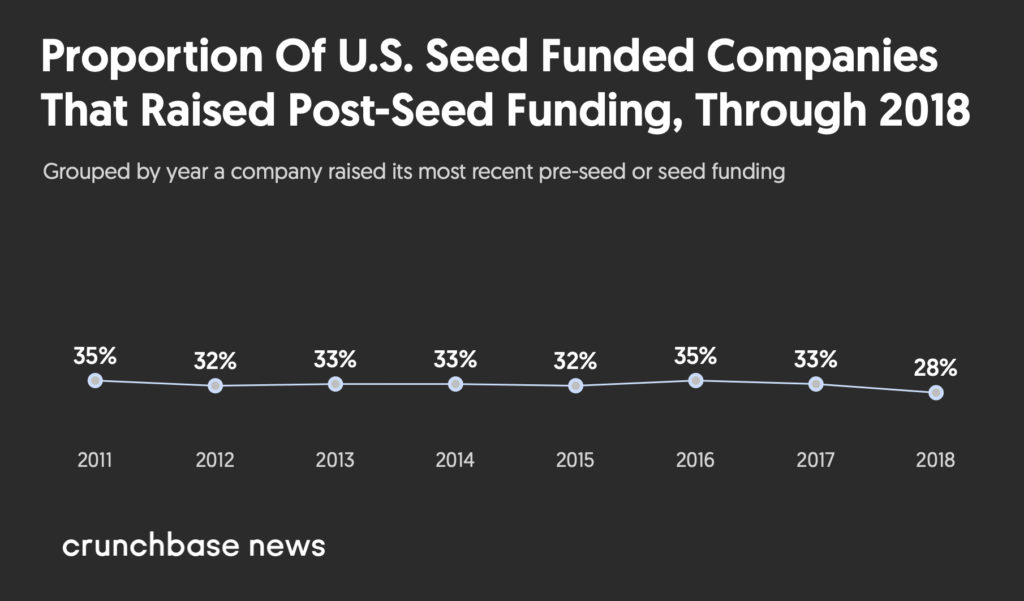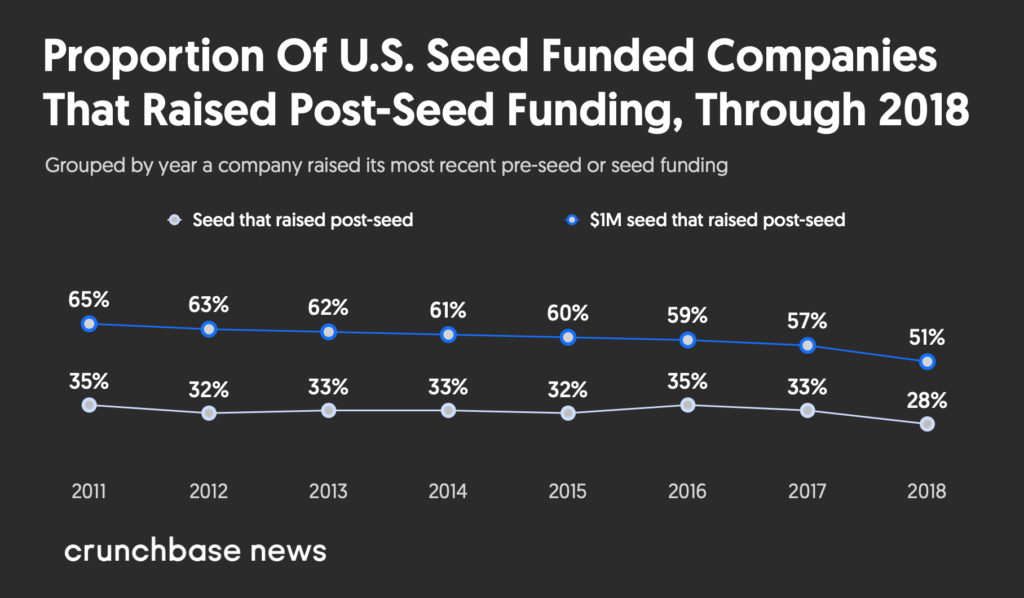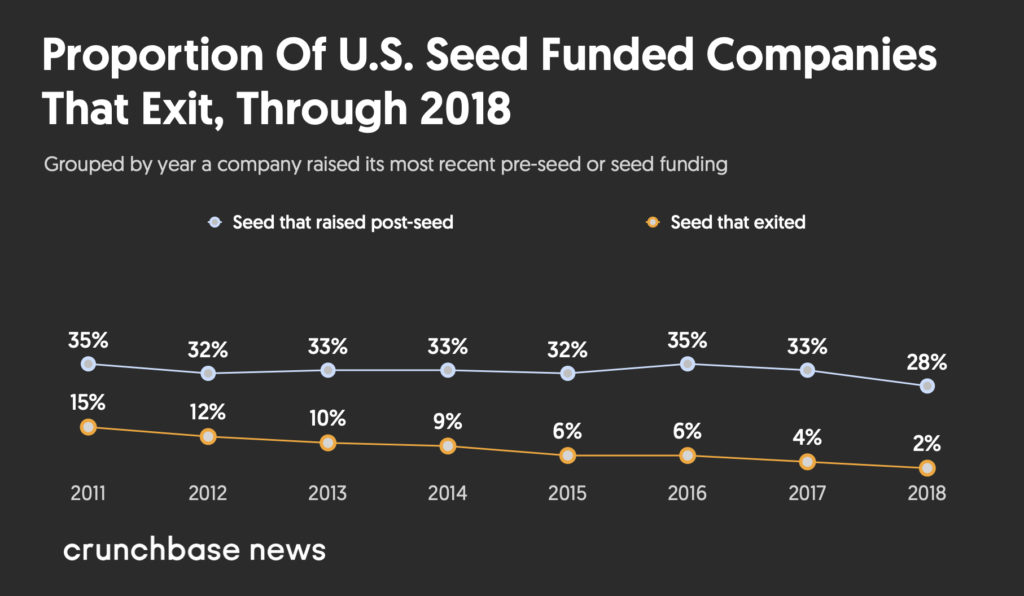Editor’s note: This is the first in a multipart series looking at seed funding trends. Read our earlier analysis of how seed funding has grown in the past 10 years here.
Seed funding experienced steep growth in the past decade, with more than 40,000 U.S.-based startups raising this early capital since 2011, per Crunchbase data.
Subscribe to the Crunchbase Daily
With all this growth, are a greater proportion of startups stonewalled at seed? How many of these startups are successfully raising post-seed funding to graduate to the next phase? It turns out that while the odds of raising funding post seed have not changed significantly, per our analysis, raising a large seed round of $1 million and above significantly improves a startup’s chance of subsequent funding.
Let’s dive in.
Sequential funding post-seed
From an analysis of startups that raised their most recent seed or pre-seed funding in the U.S. between 2011 and 2018, we found an average of 1 in 3 startups went on to raise either a Series A or later-stage funding rounds in any subsequent year. 1

Those odds improve significantly when a startup has raised a seed funding of $1 million or more, Crunchbase data shows. Around a third of seed-stage funded companies raised a $1 million seed round or higher. For those companies, on average, more than 1 out of 2 startups successfully raise funding that is Series A or later.
This strongly suggests that raising institutional seed increases a startup’s odds of raising venture funding.

Exits
When analyzing the same cohort of startups for exit data, we find that of the startups that most recently raised seed funding in 2011, 15 percent have exited, with a much higher likelihood of an acquisition by 10 to 1 compared to going public.
Given that startups can take more than 10 years to exit, exit proportions trend down over time. We find 2 percent of startups that raised their most recent seed round in 2018 have exited to date. This proportion will go up over time.
Over the course of these years from 2011 to 2018, 7 percent of startups so far have made exits, 0.8 percent via a public offering.

The rise of institutional seed
Over the last decade we have seen a significant increase in startups raising seed funding, along with a greater proportion of those raising a significant seed round of $1 million or above.
The rates of success from 2011 to 2018 to raise a post-seed funding has not changed significantly over that time.
However, for the thousand or so companies in the U.S. that raise funding beyond seed every year, there are 2,000 and more companies that are not raising funding beyond seed. This contrasts with the period of 2005 to 2010 where success and failure for seed-funded companies numbered in the hundreds per annum.
Crunchbase Pro queries relevant to this article
Related articles
- How Seed Funding Has Exploded In The Past 10 Years
- As Investors Pivot To Seed And Growth, Who Is Left Leading Series A?
- What This Year’s Seed Funding Tells Us About The Startup Future
Methodology
For this analysis we include pre-seed and seed funding rounds. We exclude angel and equity crowdfunding.
The data contained in this report comes directly from Crunchbase, and is based on reported data. Data reported is as of November 2021.
Seed funding can span funding over a number of years and ranges from thousands of dollars on the lower end all the way through to millions of dollars for the upper ranges.
Illustration: Dom Guzman
Crunchbase data is in part built from a community of contributors, founders to venture firms. It also has machine-learning tools and an analyst team that add funding data to Crunchbase. There is, however, most likely some selective bias as companies who raise seed funding and do not raise later funding might never be added to Crunchbase.↩

Stay up to date with recent funding rounds, acquisitions, and more with the Crunchbase Daily.


![Illustration of a guy watering plants with a blocked hose - Global [Dom Guzman]](https://news.crunchbase.com/wp-content/uploads/quarterly-global-3-300x168.jpg)
67.1K Followers